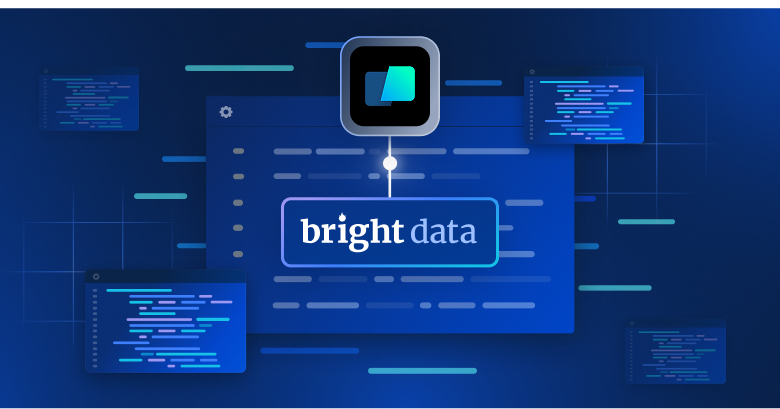In this guide, you will see:
- The history of MCP transport technologies and why the shift from SSE to Streamable HTTP happened.
- What SSE is and how it was used in older MCP versions.
- What Streamable HTTP is and how it is applied in the current version of MCP.
- A summary table comparing SSE and Streamable HTTP.
- How to stay updated on protocol specification developments.
Let’s dive in!
A Bit of History Behind the Transport Protocols Used by MCP
MCP (Modal Context Protocol), one of the most popular and widely used AI protocols today, replaced the HTTP+SSE transport mechanism with Streamable HTTP starting from protocol version 2026-03-26. That has marked a significant change in the protocol’s architecture.
Now, let’s better understand this change before explaining what these two transport mechanisms are.
Why AI Protocols Need Transport Mechanisms
AI protocols like MCP need transport mechanisms to facilitate the exchange of information between the different components in the protocol’s architecture.
Specifically, MCP uses JSON-RPC 2.0 as its wire format between clients and servers. For transmission of JSON-RPC messages, it relies on standard transport mechanisms like HTTP+SSE or Streamable HTTP (among stdio — for communication over standard in and standard out on local servers).
Those specialized transport layers are necessary because traditional HTTP’s request-response model is inefficient for real-time AI communication. That is because plain HTTP introduces high overhead and latency due to frequent connection setups. In contrast, MCP requires continuous, low-latency data streams—something HTTP+SSE and Streamable HTTP are designed to handle.
Why the Change Was Made
MCP initially used HTTP+SSE to enable server-to-client streaming in remote scenarios. However, these three major limitations justified the change:
- No support for resumable streams.
- Requires the server to maintain a long-lived, highly available connection.
- Only allows server messages to be delivered via SSE.
Streamable HTTP addresses those issues. It enables stateless communication and even supports on-demand upgrades to SSE. That improves compatibility with modern infrastructure and guarantees more stable and efficient communication.
Impact of Transitioning from HTTP+SSE to Streamable HTTP
The transition from HTTP+SSE to Streamable HTTP as the transport protocol has been an important change for MCP. It introduced notable changes to the protocol’s implementation, requiring many third-party MCP client and server libraries to adapt.
However, as of this writing, MCP clients and servers can maintain backward compatibility with the deprecated HTTP+SSE transport.
SSE (Server-Sent Events)
SSE (Server-Sent Events) is a mechanism that allows web clients to receive automatic updates from a server. Those updates are known as “events,” and are sent over a single, long-lived HTTP connection.
Unlike WebSockets, SSE is unidirectional, meaning that data flows only from the server to the client. SSE works by the server sending a stream of events over this open connection, typically formatted as text/event-streamMIME type.
HTTP+SSE Usage in MCP
This is how MCP relied on SSE in version 2024-11-05:

The server must provide two endpoints:
- An SSE GET endpoint for clients to establish a connection and receive messages from the server.
- A regular HTTP POST endpoint for clients to send JSON-RPC messages to the server.
When a client connects, the server must send an endpoint event containing a URI that the client will use to send messages. All client JSON-RPC messages are then sent as HTTP POST requests to this URI.
The server responds by streaming events over the open SSE connection, simulating a persistent session. In detail, server messages are delivered as SSE message events, with the content encoded as JSON in the event data.
For single responses, the server sends the message and closes the stream. For ongoing communication, the connection remains open.
Pros and Cons
These are the main pros and cons of using SSE in MCP:
👍 Streaming large results: Allows sending partial results immediately, avoiding delays while MCP tools process large data or wait for external API responses.
👍 Event-driven triggers: Supports unsolicited server events to notify clients about changes, with alerts or status updates.
👍 Simplicity: Uses standard HTTP, requiring no special protocols or complex setup.
👎 Unidirectional only: Data can only flow from servers to clients in the SSE channel. Clients must use separate HTTP POST requests for sending messages.
👎 Long-lived connection resource use: Maintaining open connections can consume a lot of server resources, especially at scale.
Streamable HTTP
In the context of MCP, streamable HTTP is a method for streaming data between client and server using pure HTTP. It opens the door to real-time communication without requiring long-lived connections.
While it can still use SSE for flexibility and backward compatibility, that transport method is no longer required. This allows MCP to support stateless servers without the overhead of maintaining high-availability persistent connections.
ℹ️ Extra: Why streamable HTTP + optional SSE instead of WebSockets?
- Using WebSockets for simple, stateless RPC calls adds unnecessary network and operational overhead.
- Browsers cannot attach headers like
Authorizationto WebSockets, and unlike SSE, WebSockets cannot be reimplemented with standard HTTP tools. - WebSocket upgrades only work with GET requests, making POST-based flows complex and slower due to required upgrade steps.
Streamable HTTP in MCP
In the Streamable HTTP transport, the server acts as a standalone process capable of handling multiple client connections. It uses standard HTTP POST and GET requests for communication.
Optionally, the server can use SSE to stream multiple messages to the client. This accommodates both basic MCP servers for simple request/response tools and those offering more advanced capabilities like streaming and real-time server-to-client notifications.
The server must expose a single HTTP endpoint (referred to as the “MCP endpoint”) that supports both POST and GET methods.
The diagram below illustrates the communication flow between MCP clients and servers using Streamable HTTP:

To support resuming broken connections and redelivering potentially lost messages, the MCP server assigns IDs on a per-stream basis. These IDs act as cursors within each stream.
Given the variety of possible interactions, refer to the official MCP documentation for full implementation details.
Pros and Cons
These are the key advantages of using Streamable HTTP in MCP:
👍 Stateless servers supported: Removes the need for always-on, long-lived connections.
👍 Plain HTTP: Can be implemented using any standard HTTP server without requiring SSE.
👍 Infrastructure-friendly: Compatible with common HTTP middleware, proxies, and hosting platforms.
👍 Backward compatible: Builds incrementally on the previous HTTP+SSE transport.
👍 Optional streaming: Servers can upgrade to SSE for streaming responses when needed.
Note: At the time of writing, there are no drawbacks to the Streamable HTTP transport mechanism worth mentioning.
SSE vs Streamable HTTP: Summary Comparison
Compare the two transport mechanisms in the SSE vs Streamable HTTP table below:
| Aspect | HTTP+SSE | Streamable HTTP |
|---|---|---|
| Communication type | Unidirectional (Server → Client) | Bidirectional (Client ↔ Server via GET/POST) |
| HTTP protocol usage | GET for streaming, separate POST for client messages | Uses standard HTTP POST and GET from a single endpoint |
| Statefulness | Stateful | Stateful, but supports stateless servers |
| Requires long-lived HTTP connection | Yes | No |
| High availability required | Yes, for connection persistence | No, works with stateless or ephemeral servers |
| Scalability | Limited | High |
| Streaming support | Yes (via text/event-stream) |
Yes (via SSE as optional enhancement) |
| Authentication support | Yes | Yes |
| Support for resumability and redelivery | No | No |
| Number of clients | Multiple | Multiple |
| Usage in MCP | Deprecated since protocol version 2026-03-26 |
Introduced in protocol version 2026-03-26 |
| Backward Compatibility | — | Fully backward compatible with SSE-based clients |
Future of Transport Methods in MCP
MCP was released in November 2024, so it is still a very young protocol. To put this in perspective, HTTP 1.1—the most widely used version—has been around for nearly 20 years.
Thus, it is no surprise that the MCP specification is still evolving. Just like a few months after launch, the community decided to transition from SSE to Streamable HTTP, more changes may happen soon.
Stay up to date by checking the Discussions page on the official MCP GitHub repository. The MCP website also lets you review the latest draft of the upcoming version of the protocol.
Conclusion
In this SSE vs Streamable HTTP comparison blog post, you learned why MCP transitioned from SSE to Streamable HTTP. In particular, you understood what these two transport mechanisms are and how they affect information transmission in the popular AI protocol MCP.
As explained here, third-party MCP servers that want to follow the latest, non-deprecated MCP specs must implement Streamable HTTP. If you are looking for an up-to-date, powerful, and feature-rich MCP server, take a look at Bright Data’s MCP Server.
Bright Data’s MCP Server is built on the latest version of fastmcp, ensuring full support for Streamable HTTP while maintaining backward compatibility with SSE. It offers 20+ tools to expand your AI workflows with fresh web data, Agent Browser interactions on any web page, and much more.
For a complete tutorial, follow our article on integrating Google ADK with an MCP Server for AI agent development.
Create a Bright Data account for free today and test our infrastructure to power your AI agents and applications!






